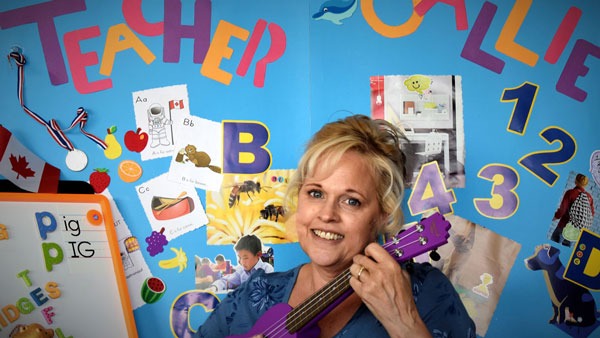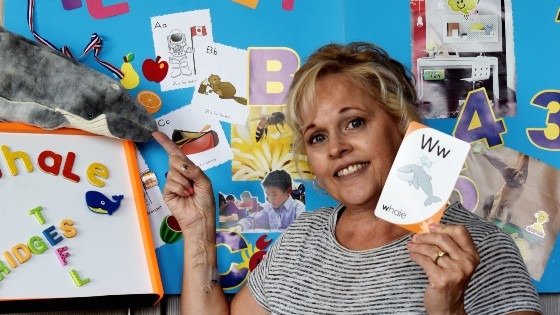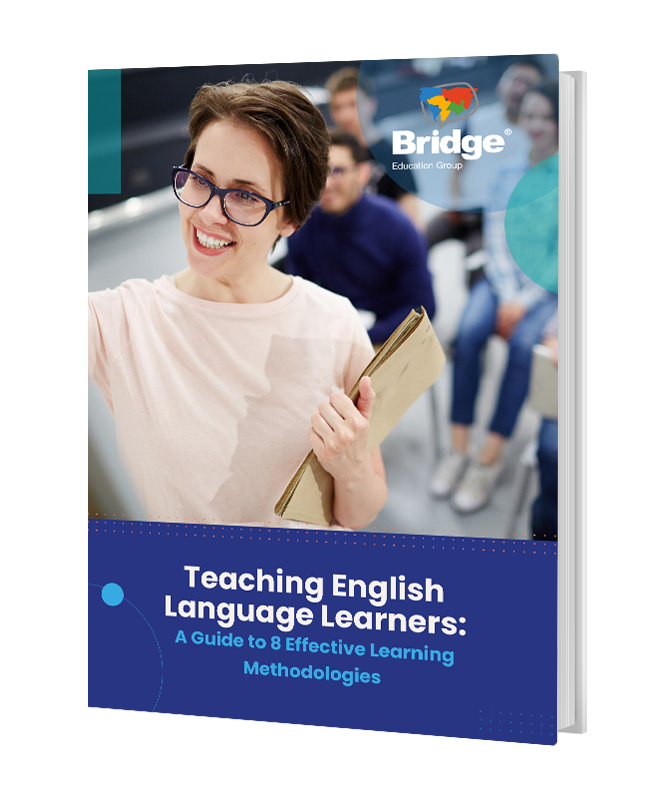Teaching vocabulary in ESL is crucial to a student’s language development and communication skills. After all, without adequate words, it’s difficult to relate thoughts, ideas, and feelings about who we are and how we interpret the world around us. But how do we achieve this goal without making students memorize lists of ESL vocabulary that will be forgotten after the next pop quiz? Check out these teaching strategies for how to teach vocabulary to ESL students – whether you’re giving in-person lessons or teaching English online.
- What is the best way to teach ESL vocabulary?
- What are the techniques for introducing and teaching new ESL vocabulary?
- How can I make vocabulary fun with ESL vocabulary games?
- What are other ways ESL students can improve their vocabulary?
- What should I keep in mind for how to teach vocabulary to ESL students?
What is the best way to teach ESL vocabulary?
Create context around words you teach
It’s a good idea to think about how students will recall a word when sitting for an exam and use this as your starting point to determine how you want your students to remember what you have taught them. In other words, don’t teach new words in a vacuum. You want to create a contextual experience (an interesting story, a series of images, a dialogue) that leaves a deep impression so that when the time comes for your class to recall a particular list of words, they’ll be able to access these words with little trouble, building their ESL vocabularies throughout each class!
Teach relevant ESL vocabulary
Be aware that if you focus on vocabulary that can’t be put to immediate and repetitive use in your students’ day-to-day lives, it will be relegated to the quicksand of short-term memory and soon forgotten, thus rendering all your hard work useless. Teaching vocabulary in ESL is of vital importance to long-term use of classroom lessons. Be sure to choose vocabulary that is connected to your students’ lives and can be easily applied to their world outside of the classroom.
Learn the ins and outs of teaching English conversation.
Consider your students’ age

-
Young learners are innately curious and love to learn the names of things that surround them. Hands-on activities, songs, or colorful visuals work well for kids.
-
Teens, on the other hand, need vocabulary to help them understand the music they listen to and the shows or movies they watch, as well as words that can help them communicate with others and express their feelings.
-
Adults need the appropriate English vocabulary to help them relate to others on both a personal and business level, and they rely on you to give them the best and most common words and phrases that will help them improve their communication skills.
Learn more about the differences between teaching young learners and adults.
Modernize your teaching skills to prepare learners for the future with
Micro-credentials in 21st-Century Teaching Skills
Get CertifiedWhat are the techniques for introducing and teaching new ESL vocabulary?
Show images or drawings
Because drawings and photos are fairly universal and understood by most people, this is perhaps the best way to present new vocabulary. The internet is chock-full of photos and pictures, and there are a variety of stock photo websites to choose from.
If you have a knack for drawing, you can make your own pictures or create your own characters, but make sure that these are large enough for everyone to see clearly if you don’t have access to a SMART board. Keep the composition of your photos or drawings simple, as too many things happening at once can confuse students.
If you are teaching online, you can make use of Skype or Zoom’s screen share function to show the images. These platforms also have whiteboard features and annotation tools, which you can use for making simple drawings on-screen
-
Pro Tip: If you like, you can also create a couple of characters that your students can relate to and use them throughout your course to present new ideas. When used consistently, students form attachments to the characters and will rely on them when learning new concepts.

Present vocabulary with realia
Realia is essential to the learning of ESL vocabulary. For a lesson on how to describe the flavors of different foods, for example, there is nothing better than to have students taste a variety of foods, condiments, herbs, and spices. As you give your class a taste of each ingredient, announce what it is, and give them the accompanying statement that incorporates the vocabulary you are teaching. Examples: This is sugar. Sugar is sweet. These are potato chips. Potato chips are salty. This is mustard. Mustard is sour.
Even if you’re teaching virtually, you can use traditional and digital realia in your online classroom. For example, you can use an online map to review English directions or the PDF version of a restaurant menu to practice phrases for ordering food. You can learn more about using realia in the virtual classroom by watching a past BridgeUniverse Expert Series webinar on the topic.

Introduce new words in the context of a story or article students read
ESL readings are of great value because they expose students to vocabulary they might not encounter in their day-to-day lives but that is useful, nonetheless. To pre-teach vocabulary from the reading you’ve chosen, follow this structure:
-
Make a list of 10 to 12 words that will be found in the reading and go over these verbally with students prior to starting the lesson.
-
As you go through the list, ask your students if any of them know the meaning of each word. Give them time to discuss words and guess the meanings if they’re not sure. (It’s a good idea to have two or three words that students already know, as this gives them familiar ground to stand on.)
-
As students call out the definitions they know, write these on the board, but leave a blank space next to the words they don’t know.
-
Try to teach these words by drawing a simple picture or acting them out, if possible. If you are still unable to get your point across, let your students know that they’ll be able to figure out the meaning when they’ve read the text, and remind them that you will make sure everyone understands the vocabulary by the time the lesson is over.
-
Pro Tip: Tell your students to not copy the definitions in their notebooks until you’ve finished the first part of the activity. The reason behind this is to make sure that your students are focusing on the lesson, listening to one another, and exchanging ideas instead of getting hung up on copying words from the board.
As you continue the lesson:
-
Have your students read the text aloud, one sentence or paragraph at a time (depending on class size). Don’t interrupt as they read unless they’re having great difficulty with a word.
-
Once everyone has had the opportunity to read out loud, go over the words they don’t understand, including those that are not on your initial vocabulary list. Remind students to underline words they have difficulty pronouncing or do not yet understand.
-
Readings should always be followed by questions, first verbal and then written, to give students the opportunity to test their newly acquired vocabulary words and commit what they’ve learned to long-term memory.
-
Homework that involves students writing their own sentences or answering predetermined questions will also help to reinforce the vocab they’ve learned in class. (Be sure not to use multiple choice questions or short answers, as these do not aid in the reinforcement of either writing or speaking in the target language.)
Learn more about the importance of storytelling in the ESL classroom.
Use translation from the students’ first language (yes, sometimes it’s okay!)
If you speak the students’ language or you have a teaching assistant who can help you translate, ask students what words they would like to learn. I call this “How do you say?” day.
During these sessions, students are encouraged to ask questions about things that interest them or help them to communicate in school or at work. Be sure to stay away from taboo topics as well as topics that are too personal.
These lessons are usually short and can be complemented with role-playing or ESL games that encourage students to put their new vocabulary to immediate use. Always be sure to ask the appropriate questions that promote verbal repetition.
Use antonyms and synonyms to teach and review ESL vocabulary
In order to build vocabulary, it’s a good idea to not only use the words from your chosen vocabulary list but to also incorporate their synonyms and antonyms. Using opposites to teach new vocabulary gives students the opportunity to learn twice as many words. To make a bigger impact on your students’ learning process, use pictures to illustrate sentences, or put words into short sentences that tell a story.
The following is an example of how to use opposites that can be used with beginner-level students:
Vocabulary: day/night, sun/moon, open/close, on/off
Put the following sentences on the board. You can fill in the words the students have already learned, but have them guess the opposite word.
- The sun is in the sky during the day. We can see the ____ at _____.
- I turn the lights off during the day, and I turn them ____ at night.
- I open the windows during the day, and I ____ them at night.
Then, fill the words in as the students say them.
- The sun is in the sky during the day. We can see the moon at night.
- I turn the lights off during the day, and I turn them on at night.
- I open the windows during the day, and I close them at night.
Next, ask questions that relate to your story.
- Do you see the sun during the day or at night?
- When do you see the moon?
- When do you turn on the lights?
- When do you turn them off?
- Do you close your windows during the day or at night?
-
Pro Tip: When answering yes/no questions, students should use complete sentences. Short answers do not help in the acquisition of new vocabulary and sentence structure nor do they motivate students to practice their language skills.
Another way to incorporate antonyms into a lesson is by asking simple questions in which students get to choose the answer that suits their needs. Make up questions that incorporate new phraseology and that students can ask one another.
Examples:
-
Do you like staying at home on your day off, or do you like going out with your friends?
-
What do you save your money for, and what do you spend your money on?
-
When do you feel happy, and when do you feel sad?
(The repetition of phrases within the same question helps students commit them to memory.)
How can I make vocabulary fun with ESL vocabulary games?
Games are an essential tool in the TEFL/TESOL classroom. They allow students to think outside the box, put what they’ve learned to immediate use, create experiences with their classmates, and break away from lessons that could otherwise be tedious.
There are many simple games and activities that can be used to teach ESL vocabulary. For example, in the video below, a teacher plays a game called “Missing Object” with his online students.
This interactive game from the Bridge Micro-credential course: Games and Activities for the Online Classroom (Very Young Learners) is a fun way to teach vocabulary for ESL students in online or in-person classes. These games are also great for reviewing previously addressed material.
-
Show the student a collection of real items (realia) on a tray. Items could include a phone, a pair of glasses, a book, a watch, etc. You can include items that review vocabulary you’ve recently taught or items along a certain theme, such as foods.
-
Ask the student what each item on the tray is. Practice the pronunciation and ask follow-up questions (ex: “What do you use a phone for?”).
-
After you’ve reviewed the tray of items with the student and discussed them, move the tray out of his or her sight, and remove one item. Then, show the tray again and ask the student, “What’s missing?”
-
If the student cannot figure out what’s missing, provide a clue (ex: “You put these on to help you see better”).
Check out more fun ESL games and activities for young learners and teens.
Learn about 8 ESL methodologies and get sample activities with the free guide to
Teaching English Learners: Popular ESL Learning Methodologies
downloadWhat are other ways ESL students can improve their vocabulary?
If you ask students who are self-taught what methods they used to learn English on their own, they will invariably tell you the following:
-
They listen to and learn their favorite English songs and watch movies and TV shows with subtitles in either English or Spanish (some students swear by English subtitles, saying that it helps with their pronunciation).
-
They read English books and magazines that are of interest to them.
-
Another way to improve students’ vocabulary is to have them keep a notebook that is small enough to fit in their pockets. This is a great way for them to have a real-time record of the words and short phrases they use in their daily lives. When students keep a list of the words that are of interest to them, they are effectively writing their own little dictionaries that can be filled with pictures, synonyms, antonyms, and sentences that are useful to them.
-
Pro Tip: Correcting students’ vocabulary mistakes helps them improve their usage of new words. One way to develop this skill is by taking a short Micro-credential course in Error Correction in the EFL Classroom.
Need a quick refresher on how to teach ESL vocabulary? Download this Bridge infographic for strategies for teaching vocabulary to English language learners
What should I keep in mind for how to teach vocabulary to ESL students?
Here are some more tips for helping your students learn vocabulary better:
-
Whether you are teaching vocabulary, grammar, phraseology, or pronunciation in a physical classroom or online, do your best to make sure your students can relate to each lesson and are almost immediately able to use what they’ve learned.
-
Follow a logical and organic order when teaching new vocabulary, and put words into useful phrases as often as possible.
-
Look for every opportunity to review what you’ve taught from one lesson to the next, and engage your students by focusing on topics that interest them the most.
-
Always encourage your students to ask you about the meanings of words and how these can be applied to their lives outside of the classroom.
-
There are myriad methods of teaching vocabulary – get creative, have fun, and do what works best for your students.










